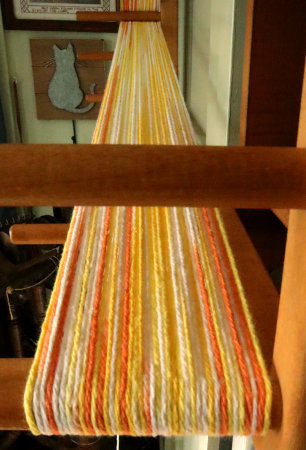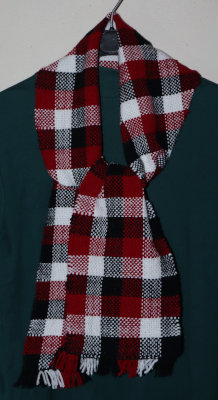In my planning post I decided to experiment with a variegated yarn. I warped my loom for two more bath mats and tried something a bit different with each.
- yarn: Peaches & Cream 4-ply worsted weight cotton
- structure: classic crackle
- warp: variegated yarn in white, yellow, and orange
- pattern weft for both is red
- sett: 8 e.p.i.
- width in reed: 19"
- treadling: 4-shaft crackle has 4 treadling blocks, usually treadled in A, B, C, D order to create a stair step pattern. I used different block orders for each bath mat.
- wet finishing: hot water hand wash and machine dry on hot cycle
- machine hemmed both, rather than fringe
- background wefts: same variegated yarn as warp for both background wefts
- treadling: alternated A and C blocks
- off-the-loom dimensions before wet finishing: 16.5" x 26"
- finished dimensions: 15" x 23"
The variegated warp and weft gives a pseudo-plaid look to the light colored rectangles.
4th Bath Mat
- background wefts in solid colors: orange (x) and yellow (y)
- treadling: alternated A and B blocks
- off-the-loom dimensions before wet finishing: 16.5" x 26.25"
- finished dimensions: 15.5" x 24"


























